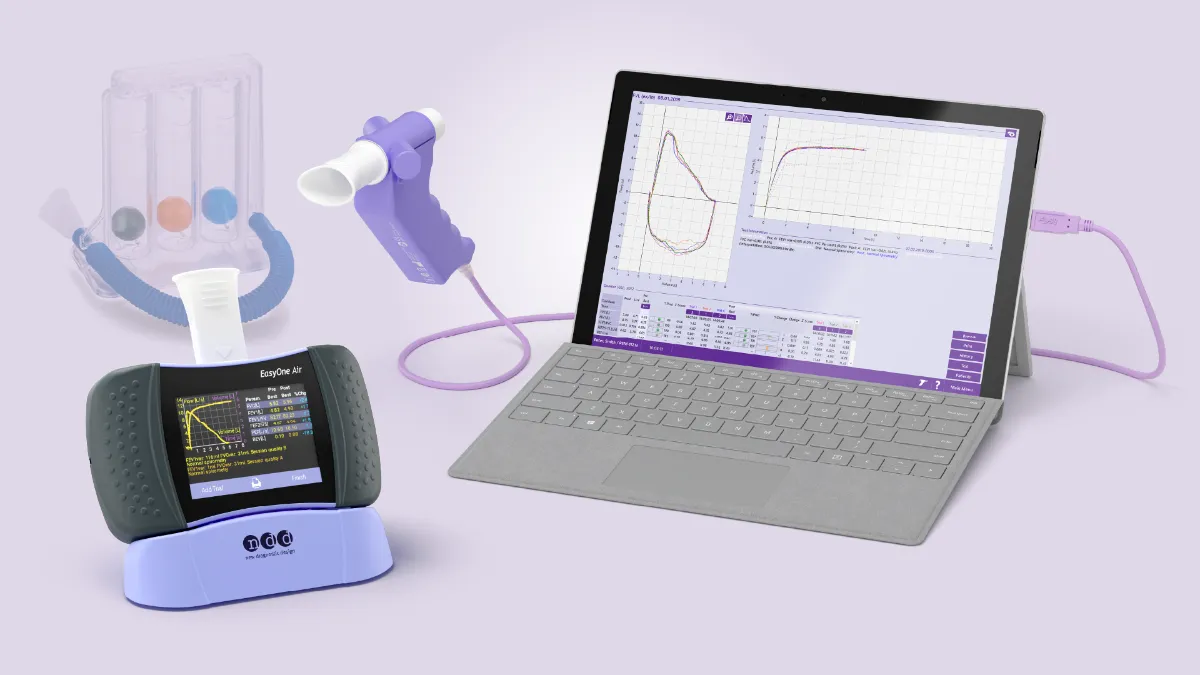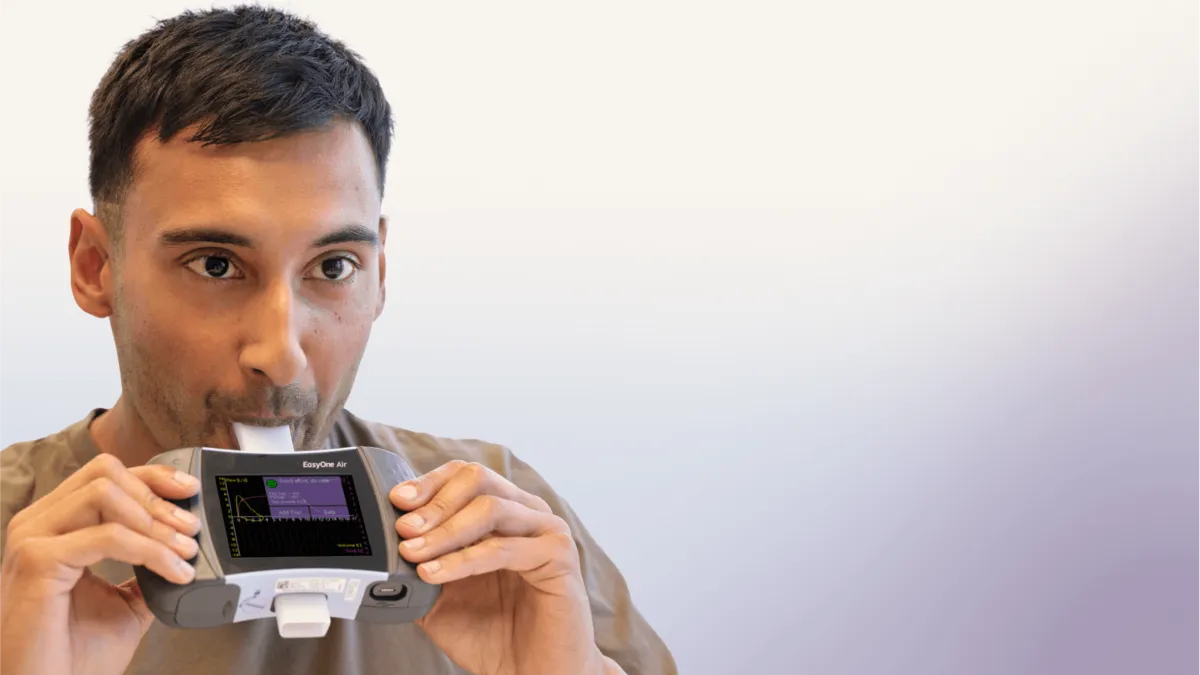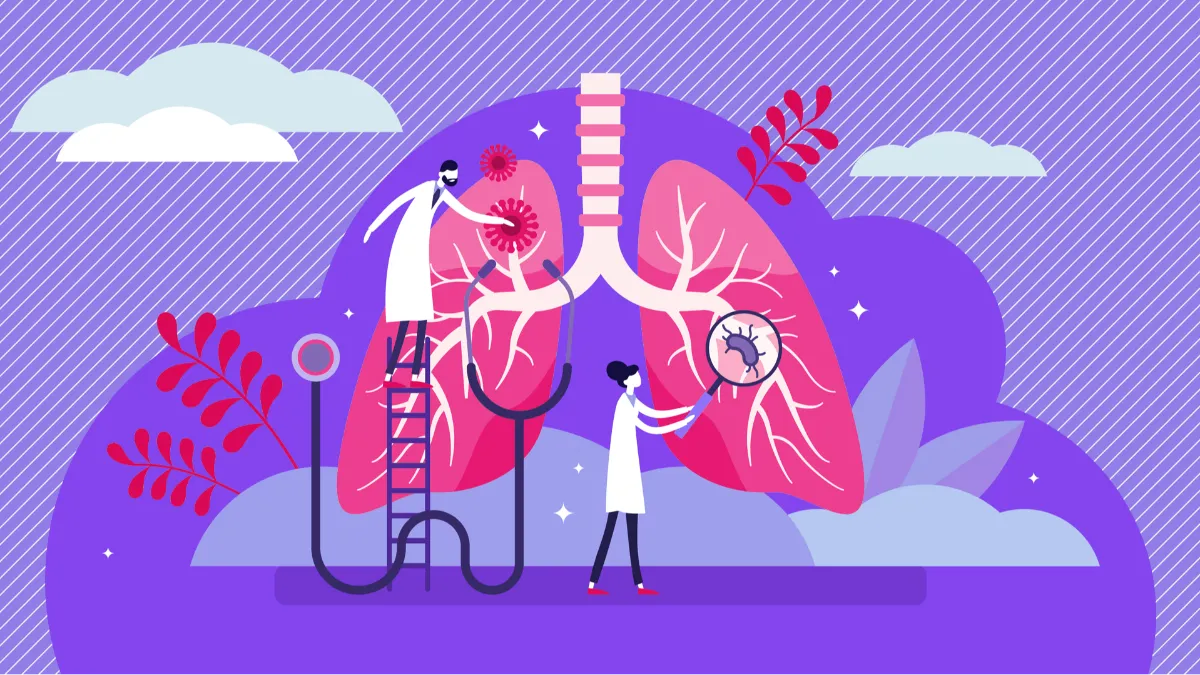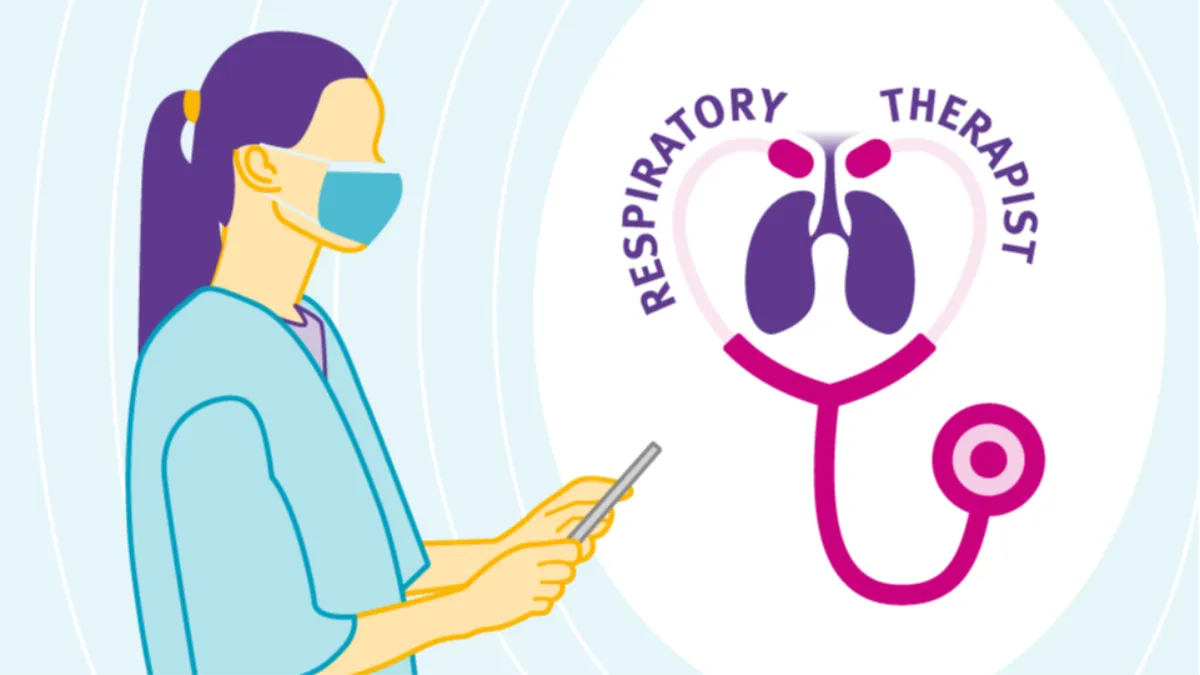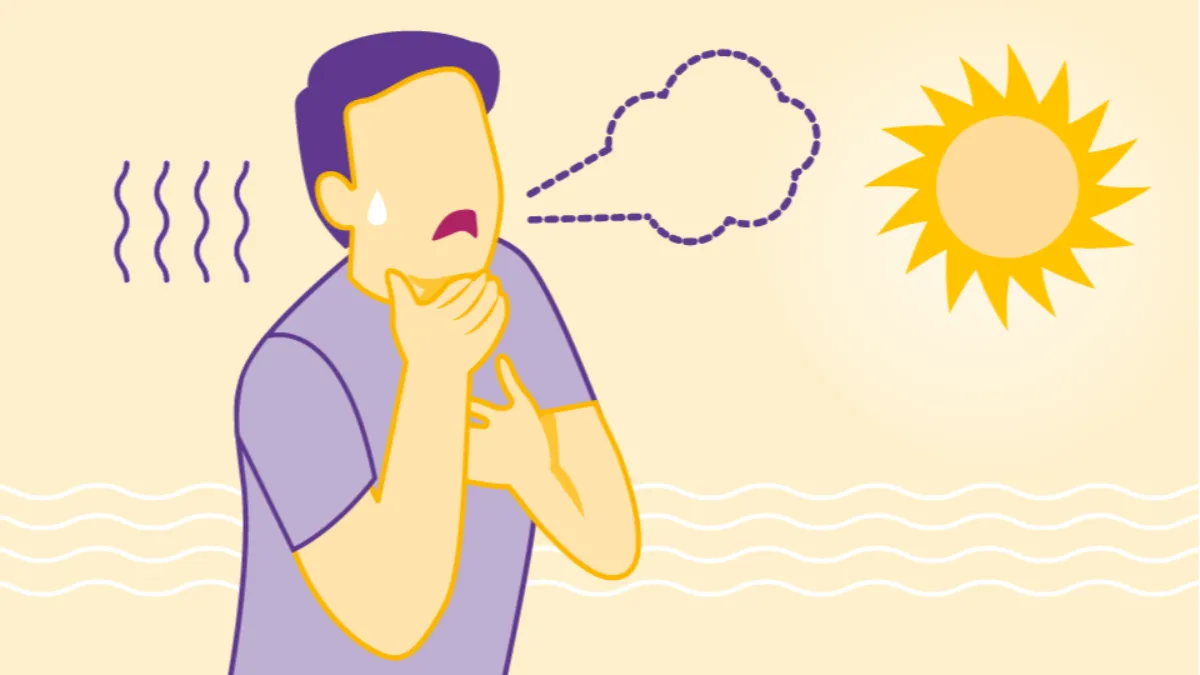Climate change: A dire threat to people with lung diseases and a call to action
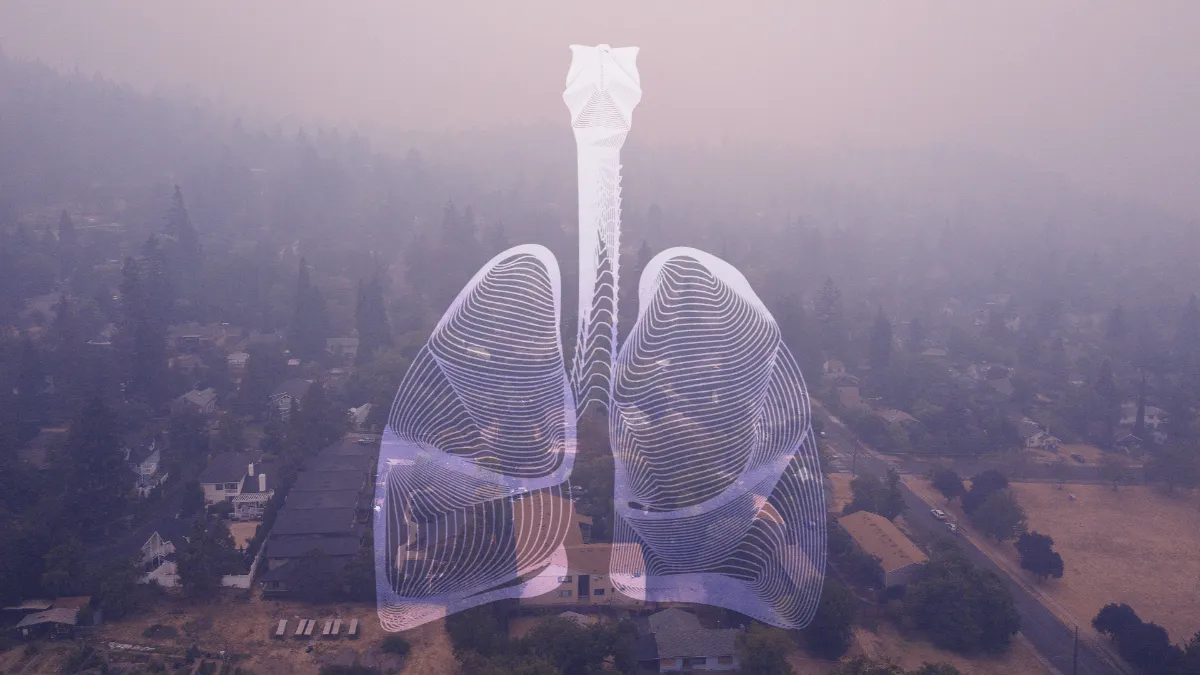
The climate has already begun to change. In early June, smoke from Canadian wildfires blanketed the eastern portion of the United States, exposing millions of people to some of the poorest air quality in the world. While the orange haze, limited visibility, and bonfire smell was a new experience for many, this is far more familiar in the western parts of the US, where wildfire smoke and poor air quality are an annual occurrence. The wildfires continue to rage in Canada.
Climate change results in intensified heat and extended droughts, triggering wildfires that burn more acreage for longer periods of time.1 Wildfires are just one environmental hazard worsening due at least in part to human-driven changes in the climate. Wildfire smoke poses a problem to anybody who inhales the harmful compounds, but for people with pulmonary or respiratory diseases, that risk is compounded.
A brief discussion about climate change #
“Climate change” refers to the shift in climate patterns over time in response to human-related activities. This is due to the “greenhouse” effect, which is when heat is trapped in our atmosphere. The greenhouse effect is not inherently a bad thing. In fact, it’s one of earth’s traits that make the planet sustainable for human life.
Climate change has already begun to have profound effects on the world, but there are a few effects of imminent importance to people with lung disease. We’ll specifically discuss the harms associated with wildfire smoke and ozone, before covering the importance of healthcare professionals’ role in managing the effects of climate change.
The impact of climate change on lung diseases #
The harms of wildfire smoke
The detriment of wildfire smoke to people with chronic obstructive pulmonary disease (COPD) is well-documented and extensive
Liu et al6 performed a systematic review of studies investigating the relationship between wildfire smoke and human health published between 1986 and 2014. Their analysis reviewed 61 studies, most of which were in the United States and Australia. In the 45 studies investigating respiratory health, 90% found that wildfire smoke was “significantly associated with respiratory morbidity.”6Additionally, their systematic review found that daily pollutant levels during or after wildfires exceeded EPA regulations in most of the studies.
Fann et al estimated that the cost of wildfires in the continental United States in the years of 2008 to 2012 was between $11 and $20 billion per year due only to short-term exposure; when considering the impact of long-term exposure, their annual estimate balloons to a staggering upward limit of $130 billion.7 That figure is nearly the gross domestic product of the state of Mississippi; in other words, the long-term effects of wildfire smoke is expected to cost the United States the economy of Mississippi annually.
The harms of ozone
Ozone itself is a greenhouse gas that is particularly harmful when inhaled at the ground-level. Exposure to ozone has been associated not only with increased COPD hospitalizations in people with COPD, but in COPD incidence itself, suggesting that ozone both causes and worsens COPD.8 It’s estimated that long-term exposure to ground-level ozone resulted in 365,000 deaths in 2019 alone, or 11% of COPD deaths globally.
In a study published 20 years ago, Gent et al found that children with asthma are at significantly increased risk of wheeze (by 35%) and chest tightness (by 47%) when exposed to increased levels of ozone.9 In 2003, the Environmental Protection Agency (EPA) standard for ozone concentration over an eight hour average, which is the highest level of what the EPA deems safe for the populace, was 80 parts per billion (ppb). The EPA changed the standard to 75 ppb in 2007 and then to 70 ppb in 2015, where it remains. The mean for Gent et al’s study, in 2003, was 51 ppb, or significantly lower — and “safer” — than even the EPA’s current standard. This underscores the challenge of designating safe levels when significant sections of the population are at increased risk.
Clinical perceptions of air pollution and climate change #
In 2015, the American Thoracic Society (ATS) conducted a survey of ATS to understand their perspectives on climate change, its impact on their patient communities, and more.10 Only 38% of respondents felt that they were “very” or “moderately” knowledgeable about the association between climate change and health, underscoring the importance of educating healthcare personnel.10Most survey respondents felt that their patients were already experiencing at least one adverse effect from climate change, with 77% of respondents believing their patients are experiencing air pollution-related increases in severity of illness. Finally, respondents felt strongly that physicians should play a role in responding to climate change; 72% stated doctors should inform the public about the health effects of climate change while 62% felt that doctors should inform their patients.
In an April review published in Chest titled “Climate Change for the Pulmonologist,” Balakrishnan et al highlight the evidence for why pulmonologists should prioritize their own understanding of climate change’s impact on their patient health while also working to mitigate climate change’s root causes and effects.11 Balakrishnan et al outline the already very clear effects climate change has on patients routinely monitored by pulmonologists. The authors urgently call on the pulmonology community to advocate for mitigation strategies, educate their patients on how to monitor air quality and protect themselves, and call on medical schools — only 15% of which currently have curricula dedicated to climate change — to commit to more research and education on the harms of climate change.
Ways you can protect yourself against the harms of climate change #
It can feel frightening to worry about something as global and complex as climate change, which is why it’s so important to be aware of the tangible actions you can take today to protect yourself against these risks. Some of the ways you can protect yourself are:
- Monitor and be aware of the air quality index where you live. The air quality index has a color scale defined by how much risk they pose to the general population and members of the population who are more susceptible to even minor air pollution. However, it’s important to be aware that even prolonged exposure to low levels of ozone (which may not be adequately reflected in the air quality index color scale) can pose issues for people without lung disease, as mentioned above.
- In the event the air quality is poor, it’s important to wear a mask, preferably a higher quality one, if you’re outside. Surgical or cloth masks will be mildly protective, so they are still preferred, but an N95 will significantly limit exposure in comparison. It’s also important to hydrate, avoid outdoor exercise, and limit time spent outside in the impaired air.
- Consider purchasing a high quality air purifier, which will dramatically reduce the amount of harmful particles, including infectious, allergens, and smoke, in your home.12
- If you have already been diagnosed with a lung disease, be sure to talk to your provider to develop a plan to mitigate and monitor the effects of poor air quality. If you have not been diagnosed with a lung disease, it is still important to do your best to mitigate exposure to poor air quality. Also, encourage your provider to be aware of the harms of climate change.
Conclusion #
The effects of climate change are clear. It’s crucial that the world gains a better understanding of how we can mitigate the harms posed not only to people with lung diseases, but people who may develop lung diseases due to the effects of climate change. That starts with educating researchers and doctors; advocating for mitigation strategies; encouraging people to monitor air quality and do their best to protect themselves; and strengthening our global commitment to these communities.
Zhuang Y, Fu R, Santer BD, Dickinson RE, Hall A. Quantifying contributions of natural variability and anthropogenic forcings on increased fire weather risk over the western United States. Proc Natl Acad Sci. 2021;118(45):e2111875118. doi:10.1073/pnas.2111875118 ↩︎
Delfino RJ, Brummel S, Wu J, et al. The relationship of respiratory and cardiovascular hospital admissions to the southern California wildfires of 2003. Occup Environ Med. 2009;66(3):189-197. doi:10.1136/oem.2008.041376
Johnston FH, Bailie RS, Pilotto LS, Hanigan IC. Ambient biomass smoke and cardio-respiratory hospital admissions in Darwin, Australia. BMC Public Health. 2007;7:240. doi:10.1186/1471-2458-7-240
Martin KL, Hanigan IC, Morgan GG, Henderson SB, Johnston FH. Air pollution from bushfires and their association with hospital admissions in Sydney, Newcastle and Wollongong, Australia 1994-2007. Aust N Z J Public Health. 2013;37(3):238-243. doi:10.1111/1753-6405.12065
Mott JA, Mannino DM, Alverson CJ, et al. Cardiorespiratory hospitalizations associated with smoke exposure during the 1997, Southeast Asian forest fires. Int J Hyg Environ Health. 2005;208(1-2):75-85. doi:10.1016/j.ijheh.2005.01.018
Morgan G, Sheppeard V, Khalaj B, et al. Effects of bushfire smoke on daily mortality and hospital admissions in Sydney, Australia. Epidemiol Camb Mass. 2010;21(1):47-55. doi:10.1097/EDE.0b013e3181c15d5a ↩︎
Duclos P, Sanderson LM, Lipsett M. The 1987 forest fire disaster in California: assessment of emergency room visits. Arch Environ Health. 1990;45(1):53-58. doi:10.1080/00039896.1990.9935925
Johnston FH, Purdie S, Jalaludin B, Martin KL, Henderson SB, Morgan GG. Air pollution events from forest fires and emergency department attendances in Sydney, Australia 1996–2007: a case-crossover analysis. Environ Health. 2014;13:105. doi:10.1186/1476-069X-13-105
Rappold AG, Stone SL, Cascio WE, et al. Peat Bog Wildfire Smoke Exposure in Rural North Carolina Is Associated with Cardiopulmonary Emergency Department Visits Assessed through Syndromic Surveillance. Environ Health Perspect. 2011;119(10):1415-1420. doi:10.1289/ehp.1003206 ↩︎Yao J, Eyamie J, Henderson SB. Evaluation of a spatially resolved forest fire smoke model for population-based epidemiologic exposure assessment. J Expo Sci Environ Epidemiol. 2016;26(3):233-240. doi:10.1038/jes.2014.67 ↩︎
Yao J, Eyamie J, Henderson SB. Evaluation of a spatially resolved forest fire smoke model for population-based epidemiologic exposure assessment. J Expo Sci Environ Epidemiol. 2016;26(3):233-240. doi:10.1038/jes.2014.67
Elliott CT, Henderson SB, Wan V. Time series analysis of fine particulate matter and asthma reliever dispensations in populations affected by forest fires. Environ Health. 2013;12:11. doi:10.1186/1476-069X-12-11 ↩︎
Liu JC, Pereira G, Uhl SA, Bravo MA, Bell ML. A systematic review of the physical health impacts from non-occupational exposure to wildfire smoke. Environ Res. 2015;0:120-132. doi:10.1016/j.envres.2014.10.015 ↩︎ ↩︎
Fann N, Alman B, Broome R, et al. The health impacts and economic value of wildland fire episodes in the U.S.: 2008–2012. Sci Total Environ. 2018;610-611:802-809. doi:10.1016/j.scitotenv.2017.08.024 ↩︎
Kim SY, Kim E, Kim WJ. Health Effects of Ozone on Respiratory Diseases. Tuberc Respir Dis. 2020;83(Supple 1):S6-S11. doi:10.4046/trd.2020.0154 ↩︎
Gent JF, Triche EW, Holford TR, et al. Association of Low-Level Ozone and Fine Particles With Respiratory Symptoms in Children With Asthma. JAMA. 2003;290(14):1859-1867. doi:10.1001/jama.290.14.1859 ↩︎
Sarfaty M, Bloodhart B, Ewart G, et al. American Thoracic Society Member Survey on Climate Change and Health. Ann Am Thorac Soc. 2015;12(2):274-278. doi:10.1513/AnnalsATS.201410-460BC ↩︎ ↩︎
Balakrishnan B, Callahan SJ, Cherian SV, et al. Climate Change for the Pulmonologist: A Focused Review. CHEST. 2023;0(0). doi:10.1016/j.chest.2023.04.009 ↩︎
Dubey S, Rohra H, Taneja A. Assessing effectiveness of air purifiers (HEPA) for controlling indoor particulate pollution. Heliyon. 2021;7(9):e07976. doi:10.1016/j.heliyon.2021.e07976 ↩︎
Written by

Tré LaRosa
Tré LaRosa is a consultant, scientist, and writer in the Washington, DC area with extensive experience working in research (basic, translational, and clinical) and on patient-reported outcomes. He has also written extensively on neuroscience, pulmonology, and respiratory conditions, including from the patient perspective. He enjoys learning, reading, writing, spending time outdoors, and telling everybody about his mini golden retriever, Duncan.

